Chatter Mitigation in Turning Slender Components Using Viscous Fluids
Abstract
:1. Introduction
Background
2. Methodology
2.1. Lanchester Damper-like Workpieces
2.2. Modal Analysis of the Components
2.3. Turning Experiments
3. Results
3.1. Machining Process Vibration
3.2. Surface Quality
4. Discussion on the Stability and Roughness Improvements
5. Conclusions
- -
- The models simulating the stability of turning flexible tubes need to be extended to include the complex mechanics and dynamics of a Lanchester damper, i.e., cylinder-like structures rotating with a viscous fluid inside. Additionally, detailed modal analysis is required to understand and tune the effects of fluid on the mass and damping characteristics of the tube in both radial directions. New design methods to implement the proposed concept on already existing components and machinery need to be developed.
- -
- The spindle speed can be further optimized through dedicated tests to achieve better surface roughness in Region R-1, by considering the spindle speed-dependent stability and vibrations. Also, the process damping effects on the stability at low cutting speeds could be modeled for harder, difficult-to-cut metals, which are also common materials for Anilox rollers.
Author Contributions
Funding
Data Availability Statement
Acknowledgments
Conflicts of Interest
References
- Uekita, M.; Takaya, Y. On-Machine Dimensional Measurement of Large Parts by Compensating for Volumetric Errors of Machine Tools. Precis. Eng. 2016, 43, 200–210. [Google Scholar] [CrossRef]
- Taylor, F.W. On the Art of Cutting Metals—Chatter of the Tool. Trans. ASME 1907, 28, 179. [Google Scholar]
- Arnold, R.N. Chatter Patterns Formed on the Surface of Thin Cylindrical Tubes during Machining. J. Mech. Eng. Sci. 1961, 3, 7–14. [Google Scholar] [CrossRef]
- Altintas, Y.; Stepan, G.; Budak, E.; Schmitz, T.; Kilic, Z.M. Chatter Stability of Machining Operations. J. Manuf. Sci. Eng. Trans. ASME 2020, 142, 110801. [Google Scholar] [CrossRef]
- Munoa, J.; Beudaert, X.; Dombovari, Z.; Altintas, Y.; Budak, E.; Brecher, C.; Stepan, G. Chatter Suppression Techniques in Metal Cutting. CIRP Ann.-Manuf. Technol. 2016, 65, 785–808. [Google Scholar] [CrossRef]
- Sun, Y.; Zheng, M.; Jiang, S.; Zhan, D.; Wang, R. A State-of-the-Art Review on Chatter Stability in Machining Thin−Walled Parts. Machines 2023, 11, 359. [Google Scholar] [CrossRef]
- Khoshdarregi, M.R.; Altintas, Y. Dynamics of Multipoint Thread Turning—Part I: General Formulation. J. Manuf. Sci. Eng. Trans. ASME 2018, 140, 061003. [Google Scholar] [CrossRef]
- Wan, M.; Wang, H.-N.; Yang, Y. Dynamics of the Truncated Conical Thin-Wall Turning Process. J. Manuf. Process. 2023, 94, 49–62. [Google Scholar] [CrossRef]
- Kolluru, K.; Axinte, D.; Becker, A. A Solution for Minimising Vibrations in Milling of Thin Walled Casings by Applying Dampers to Workpiece Surface. CIRP Ann.-Manuf. Technol. 2013, 62, 415–418. [Google Scholar] [CrossRef]
- Khoshdarregi, M.R.; Altintas, Y. Dynamics of Multipoint Thread Turning—Part II: Application to Thin-Walled Oil Pipes. J. Manuf. Sci. Eng. 2018, 140, 041016. [Google Scholar] [CrossRef]
- Verl, A.; Valente, A.; Melkote, S.; Brecher, C.; Ozturk, E.; Tunc, L.T. Robots in Machining. CIRP Ann. 2019, 68, 799–822. [Google Scholar] [CrossRef]
- Liu, H.; Zeng, L.; Wang, C.; Han, L.; Li, P.; Wang, Y. Force-Induced Deformation Mechanism for Cylindrical Shell Thin-Walled Parts Milling With Ice Supporting: Modeling and Prediction. J. Manuf. Sci. Eng. 2024, 146, 041002. [Google Scholar] [CrossRef]
- van Zyl, D.; Altintas, Y.; Ostling, D. Parametric Design of Boring Bars with Adaptive Tuned Mass Dampers. CIRP J. Manuf. Sci. Technol. 2022, 38, 491–499. [Google Scholar] [CrossRef]
- Lanchester, F.W. Damping Torsional Vibrations in Crank-Shafts. U.S. Patent No. 1085443. 1914.
- Vakilinejad, M.; Grolet, A.; Thomas, O. A Comparison of Robustness and Performance of Linear and Nonlinear Lanchester Dampers. Nonlinear Dyn. 2020, 100, 269–287. [Google Scholar] [CrossRef]
- Zhang, Z.; Li, H.; Meng, G.; Ren, S. Milling Chatter Suppression in Viscous Fluid: A Feasibility Study. Int. J. Mach. Tools Manuf. 2017, 120, 20–26. [Google Scholar] [CrossRef]
- Zhang, Z.; Li, H.; Liu, X.; Zhang, W.; Meng, G. Chatter Mitigation for the Milling of Thin-Walled Workpiece. Int. J. Mech. Sci. 2018, 138–139, 262–271. [Google Scholar] [CrossRef]
- Dang, X.-B.; Wan, M.; Zhang, W.-H.; Yang, Y. Chatter Analysis and Mitigation of Milling of the Pocket-Shaped Thin-Walled Workpieces with Viscous Fluid. Int. J. Mech. Sci. 2021, 194, 106214. [Google Scholar] [CrossRef]
- Altintas, Y. Modeling Approaches and Software for Predicting the Performance of Milling Operations at MAL-UBC. Mach. Sci. Technol. 2000, 4, 445–478. [Google Scholar] [CrossRef]
- Altintas, Y. Manufacturing Automation: Metal Cutting Mechanics, Machine Tool Vibrations, and CNC Design, 2nd ed.; Cambridge University Press: Cambridge, UK, 2012; ISBN 978-1-107-00148-0. [Google Scholar]
- Armarego, E.J.A.; Brown, R.H. The Machining of Metals; Prentice-Hall: Hoboken, NJ, USA, 1969. [Google Scholar]
- Ståhl, J.E.; Schultheiss, F.; Hägglund, S. Analytical and Experimental Determination of the Ra Surface Roughness during Turning. Procedia Eng. 2011, 19, 349–356. [Google Scholar] [CrossRef]
- Fang, X.D.; Safi-Jahanshahi, H. A New Algorithm for Developing a Reference-Based Model for Predicting Surface Roughness in Finish Machining of Steels. Int. J. Prod. Res. 1997, 35, 179–199. [Google Scholar] [CrossRef]
- Palásti-Kovács, B.; Sipos, S.; Czifra, Á. Interpretation of “Rz = 4 × Ra” and Other Roughness Parameters in the Evaluation of Machined Surfaces. In Proceedings of the 13th International Conference on Tools, Beijing, China, 12–13 June 2012. [Google Scholar]
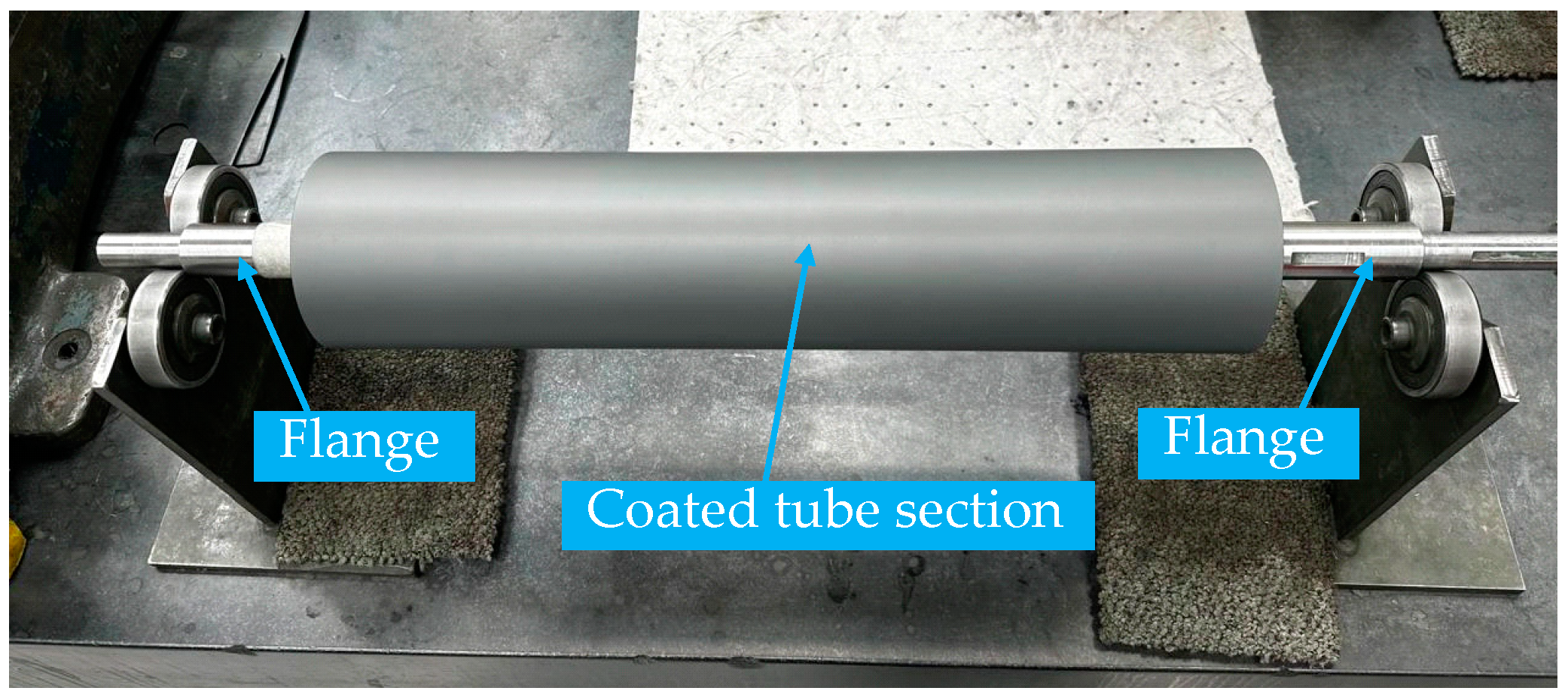
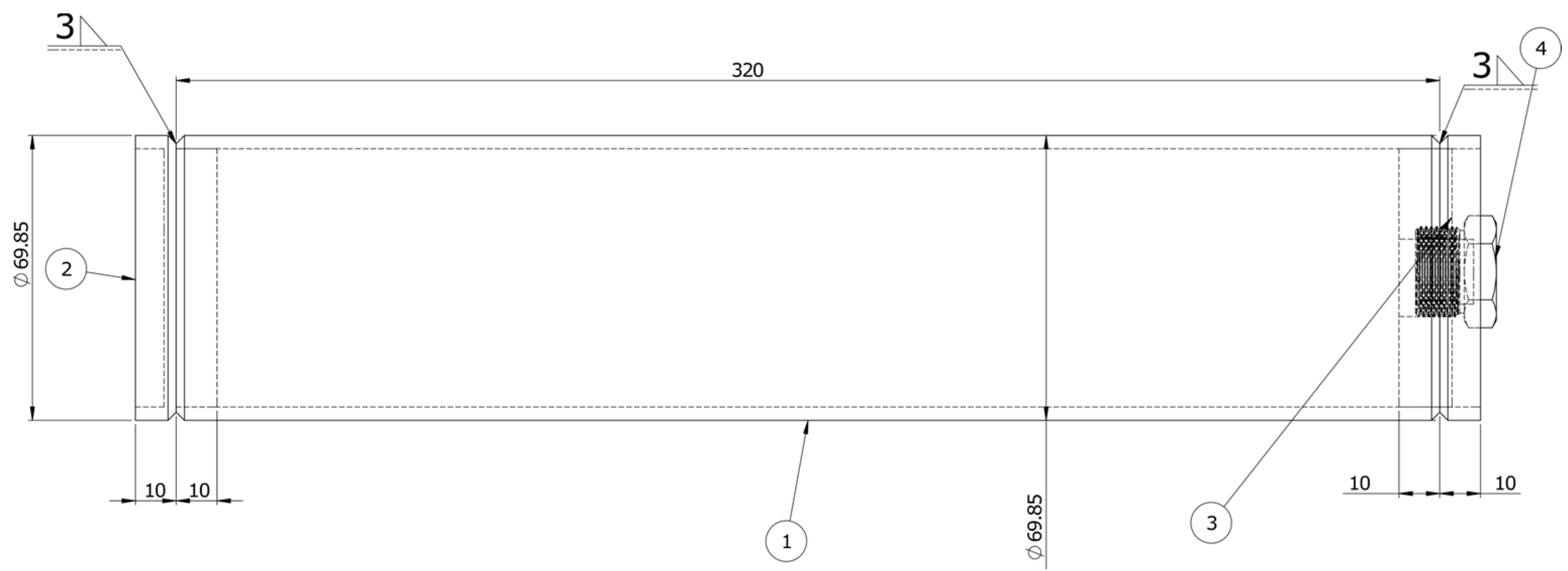


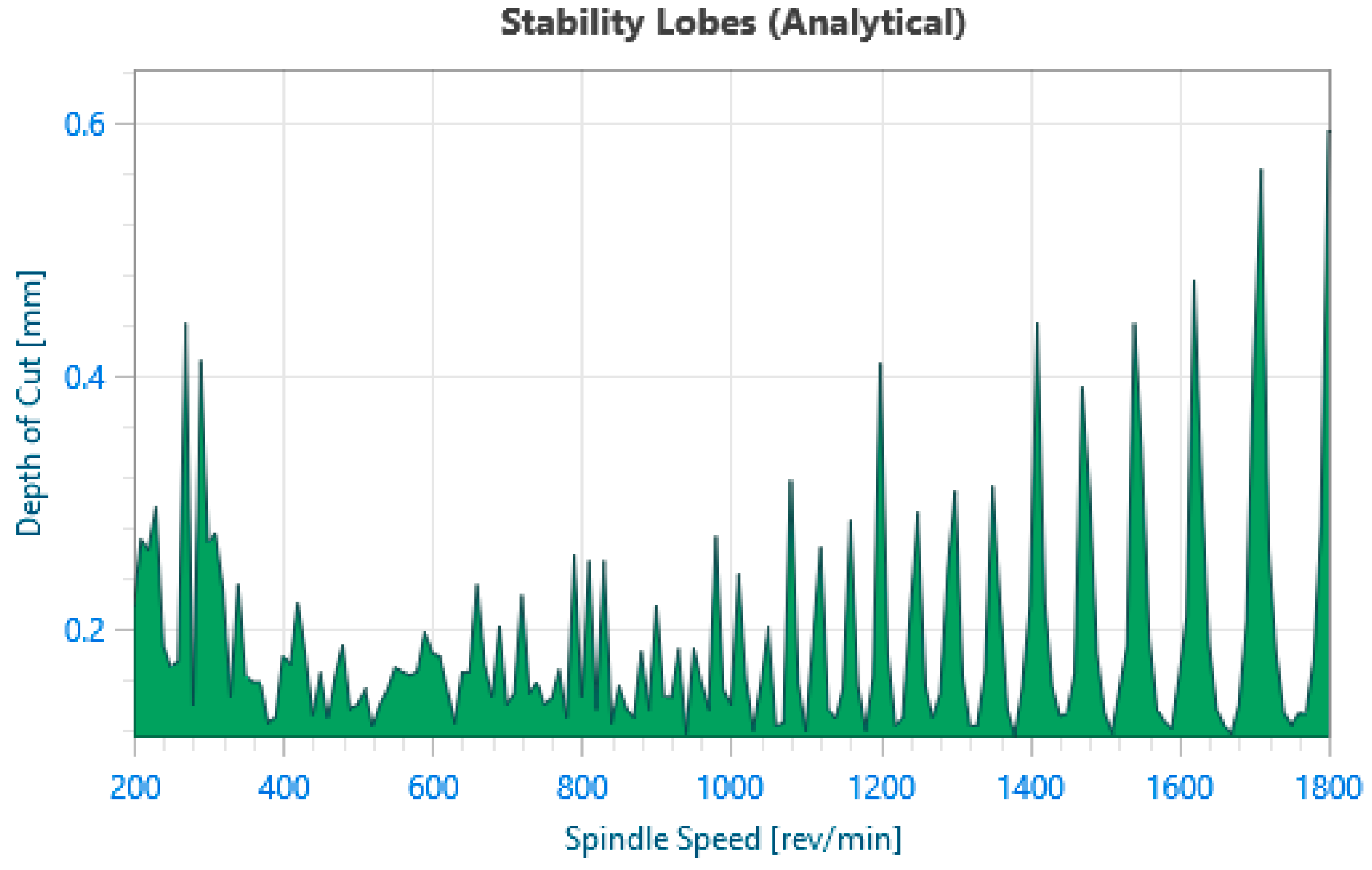
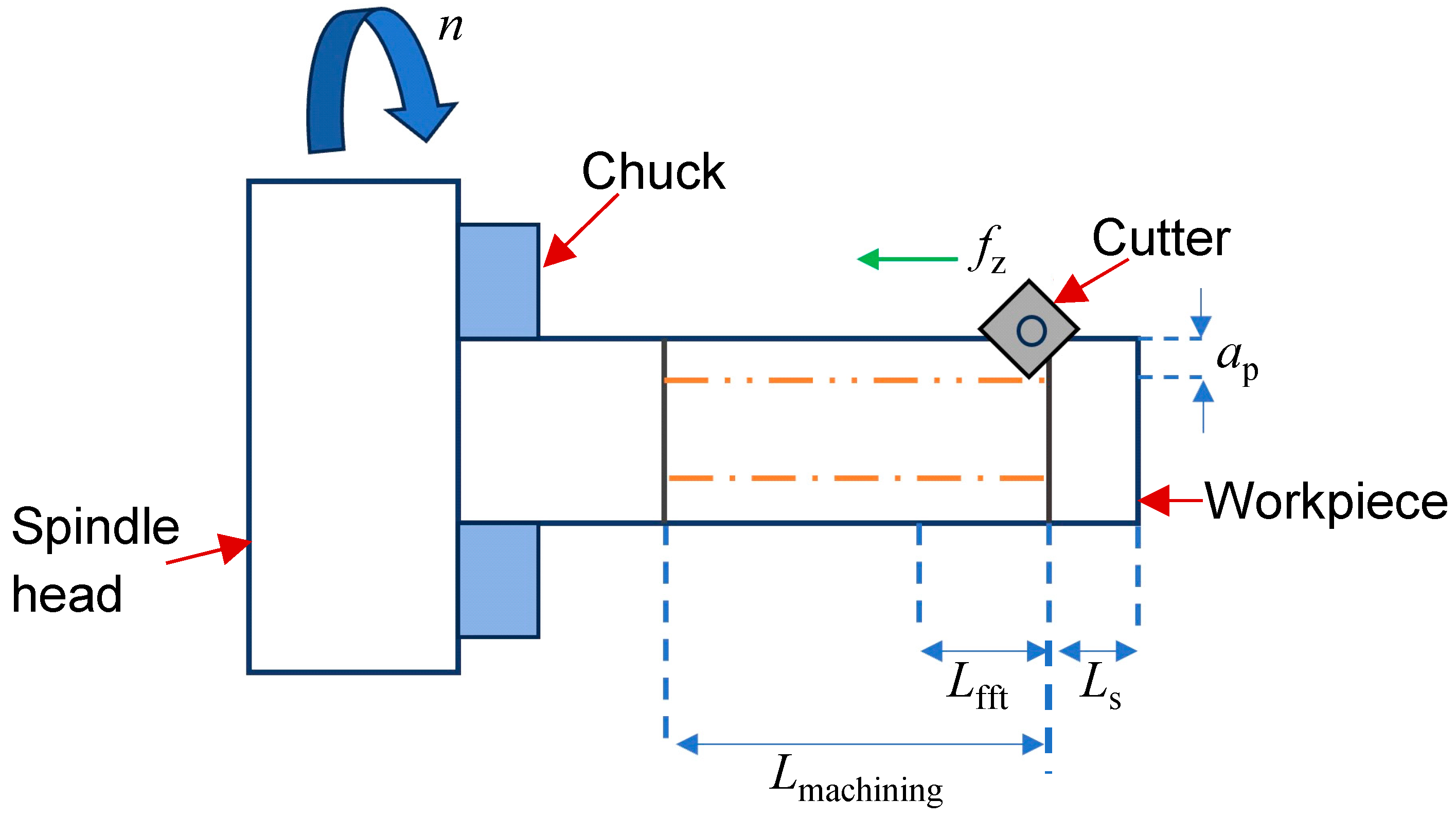
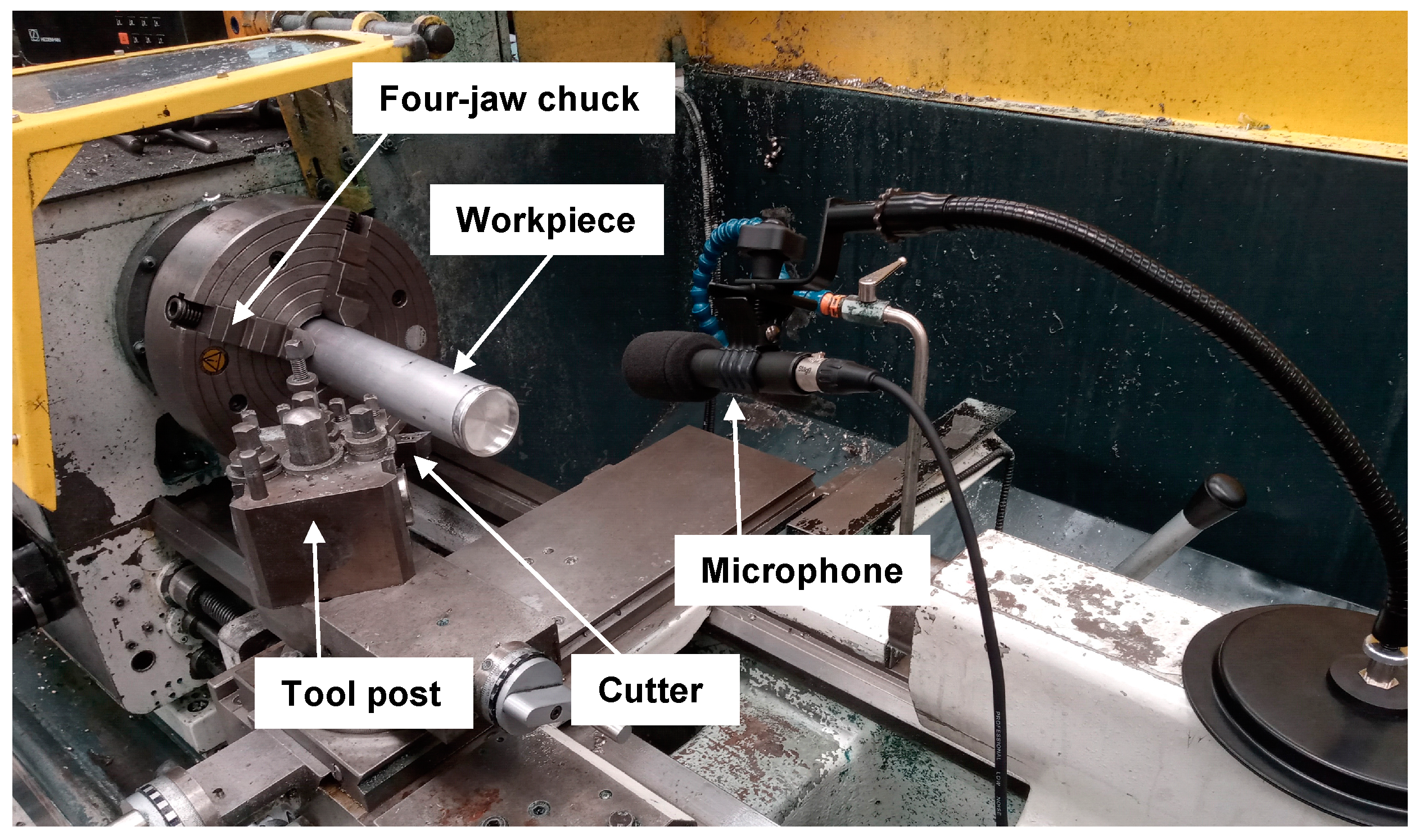


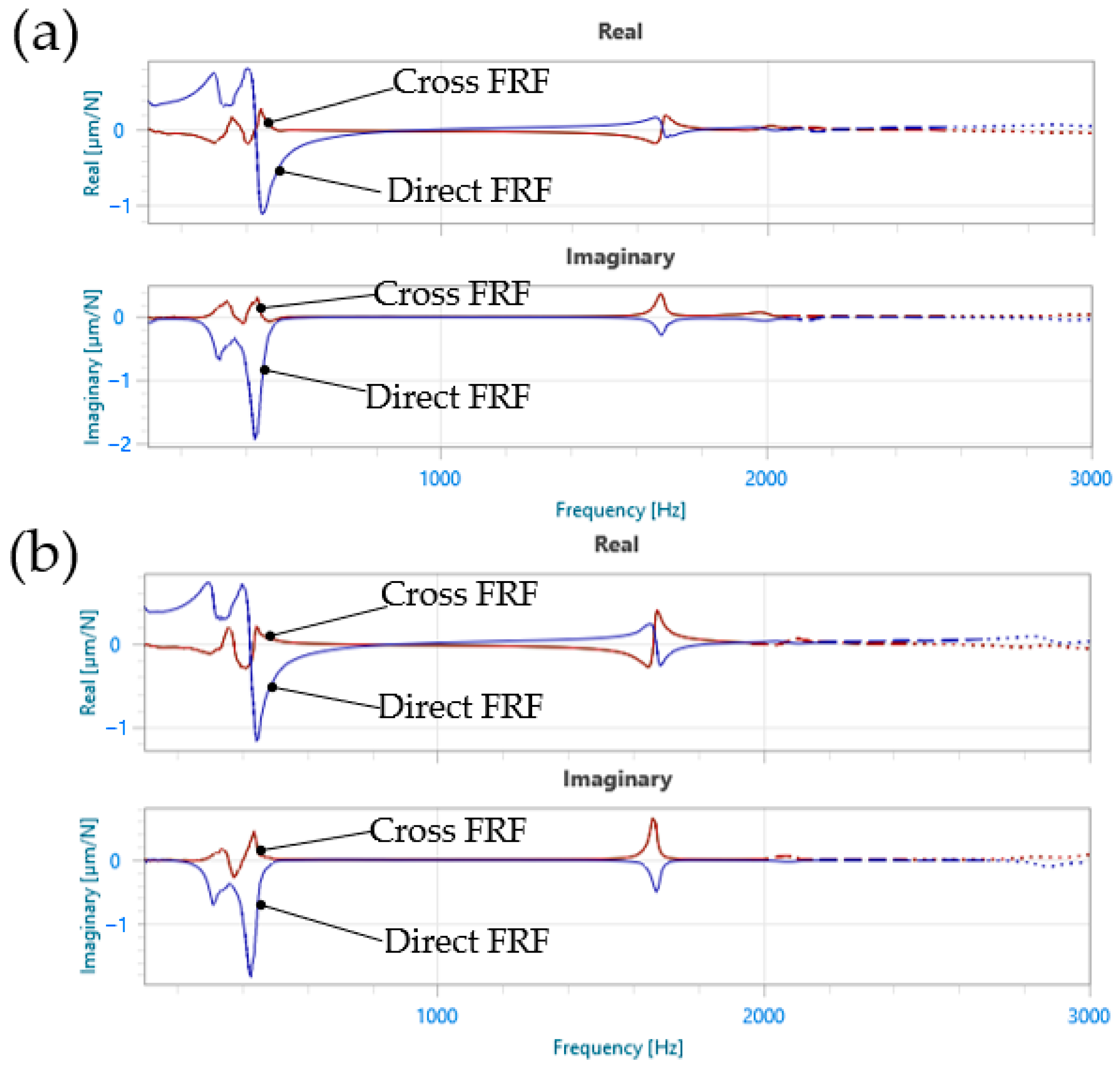
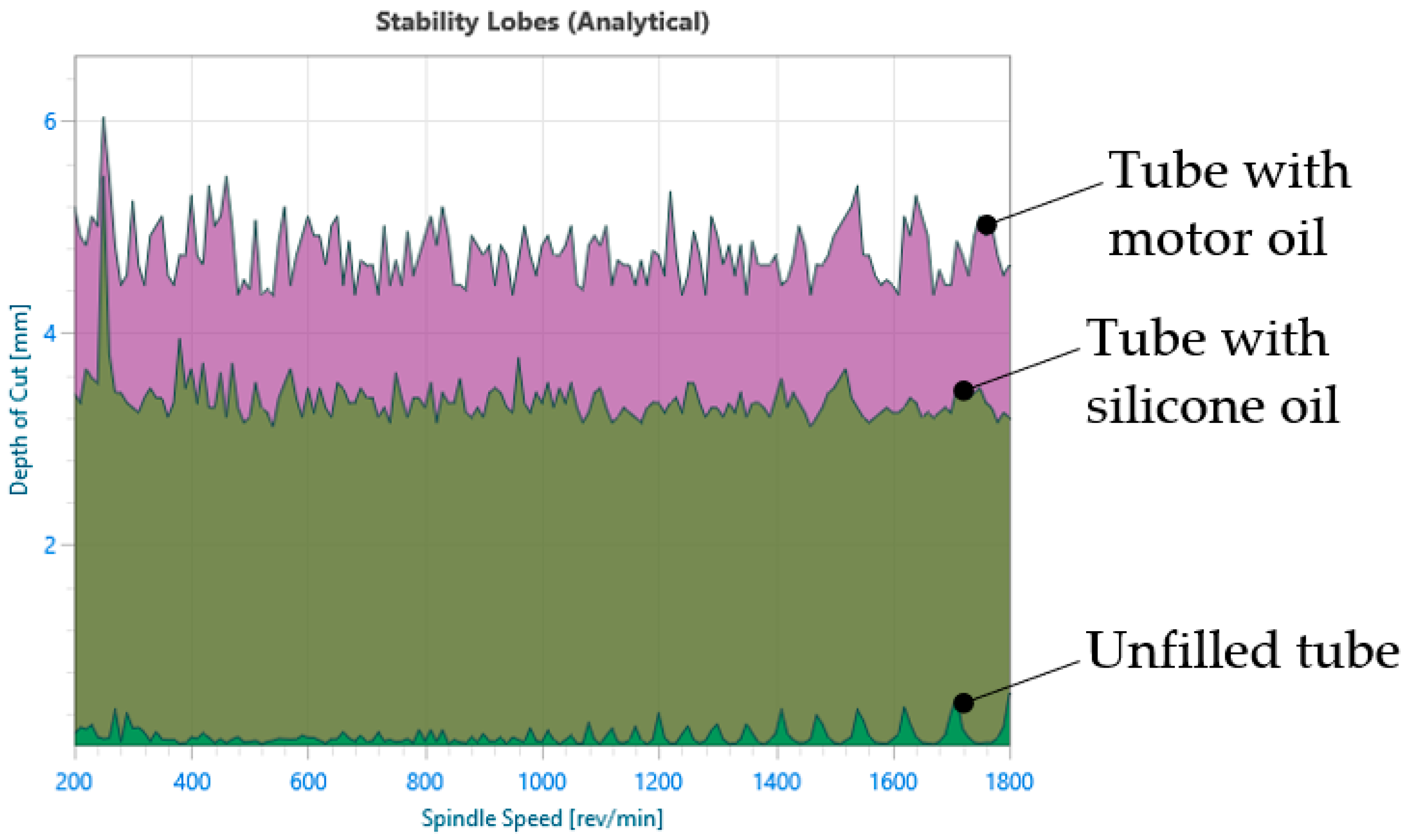
| Parameters | Value (Unit) | |
|---|---|---|
| Cutting conditions | Axial depth of cut, ap | 0.5 (mm) |
| Spindle rotation speed, n | 1600 (rev/min) | |
| Cutting velocity, Vc | 352 (m/min) | |
| Feed rate, fz | 0.125 (mm/rev) | |
| Tool specifications | Insert material | Carbide |
| Tool nose radius | 0.8 (mm) | |
| Insert series/shape | CNMG/Rhombic 80 degrees | |
| Lead angle | 60 (degrees) | |
| Tool holder | PCLNR holder w/lever lock |
| Unfilled Tube | Tube with Motor Oil (Viscosity: 102 cSt) | Tube with Silicone Oil (Viscosity: 350 cSt) | ||||||||||
|---|---|---|---|---|---|---|---|---|---|---|---|---|
| R-1 | R-2 | R-3 | Avg. | R-1 | R-2 | R-3 | Avg. | R-1 | R-2 | R-3 | Avg. | |
| Ra (µm) | 3.97 | 4.33 | 3.44 | 3.91 | 3.76 | 1.26 | 1.17 | 2.06 | 2.94 | 1.77 | 1.05 | 1.92 |
| Rz (µm) | 16.7 | 21.6 | 16.5 | 18.2 | 16.8 | 6.7 | 6.0 | 9.83 | 13.5 | 9.1 | 5.8 | 9.46 |
| Unfilled Tube | Tube with Motor Oil (Viscosity: 102 cSt) | Tube with Silicone Oil (Viscosity: 350 cSt) | |||||||
|---|---|---|---|---|---|---|---|---|---|
| (Hz) | ζ (%) | (Hz) | ζ (%) | (Hz) | ζ (%) | ||||
| Mode 1 | 341 | 5.71 | 0.256; −0.276 | 318 | 7.63 | 0.589; −0.180 | 315 | 8.85 | 0.612; −0.155 |
| Mode 2 | 544 | 1.64 | 2.97; −0.624 | 431 | 4.45 | 1.13; −0.101 | 425 | 4.95 | 1.102; −0.159 |
| Mode 3 | 2544 | 0.722 | 1.05; −1.70 | 1684 | 0.884 | 0.776; −0.924 | 1674 | 0.878 | 0.966; −1.05 |
Disclaimer/Publisher’s Note: The statements, opinions and data contained in all publications are solely those of the individual author(s) and contributor(s) and not of MDPI and/or the editor(s). MDPI and/or the editor(s) disclaim responsibility for any injury to people or property resulting from any ideas, methods, instructions or products referred to in the content. |
© 2024 by the authors. Licensee MDPI, Basel, Switzerland. This article is an open access article distributed under the terms and conditions of the Creative Commons Attribution (CC BY) license (https://creativecommons.org/licenses/by/4.0/).
Share and Cite
Griskevicius, M.; Kharka, V.; Kilic, Z.M. Chatter Mitigation in Turning Slender Components Using Viscous Fluids. J. Manuf. Mater. Process. 2024, 8, 128. https://doi.org/10.3390/jmmp8040128
Griskevicius M, Kharka V, Kilic ZM. Chatter Mitigation in Turning Slender Components Using Viscous Fluids. Journal of Manufacturing and Materials Processing. 2024; 8(4):128. https://doi.org/10.3390/jmmp8040128
Chicago/Turabian StyleGriskevicius, Matas, Vishal Kharka, and Zekai Murat Kilic. 2024. "Chatter Mitigation in Turning Slender Components Using Viscous Fluids" Journal of Manufacturing and Materials Processing 8, no. 4: 128. https://doi.org/10.3390/jmmp8040128





